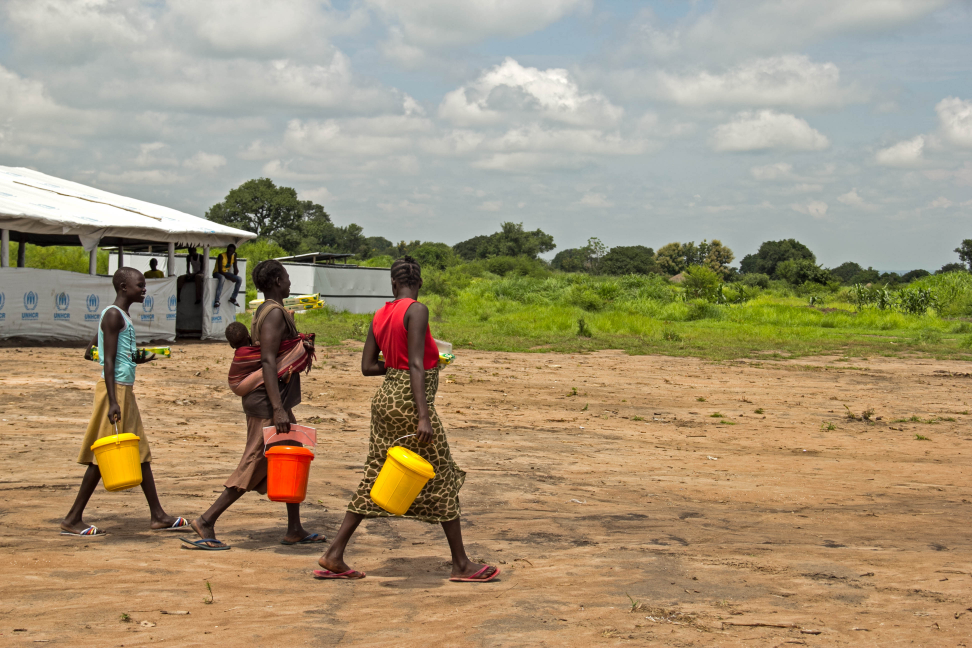Reducing transmission

Our team of researchers at Johns Hopkins Medicine is excited about the grant from the Humanitarian Innovation Fund to pilot an innovative process to improve the safety of health workers and patients from exposure to and transmission of highly virulent infections, especially in the midst of the ongoing and highly publicized viral infectious disease outbreak in West Africa.
What you may not know about your role in preventing infectious disease outbreak
Did you know that health workers and patients can unwittingly act as vectors in infection transmission?
Infections acquired within a hospital setting places both patients and health workers at risk for disease and even death. Healthcare acquired infections can result in increased health related absence from work, morbidity, mortality, and markedly increased health related expenses. In the event of an outbreak such as the ongoing Ebola virus outbreak, the hospital can become a nidus for the further propagation of cases, if appropriate precautions are not rigorously upheld. It is vitally important that health workers are adequately protected while executing their duties.

Copyright Grantland; www.grantland.net
Within the hospital, infections can be transmitted either directly (via air droplets, direct contact with skin/ bodily fluids) or indirectly (through contact with a contaminated object).
In this manner, an infected patient may infect a health worker who may then go on to infect other health workers and potentially other patients as well.
Follow the link below if you would like to watch a video depicting how cross contamination can occur following a patient encounter can occur: https://www.youtube.com/watch?v=M8AKTACyiB0.
Transmission may be broken through the strict adherence and appropriate use of infection control protocols by health care providers, hospital workers and patients. The use of infection control protocols depends on the circumstance and the mode of transmission of the suspected infectious agent.
Recommendations that have been shown to break the chain of transmission, not just in the hospital environment but in all settings (when applicable), are as follows:
- Hand washing
- Early identification and isolation of contaminated objects and/or infected persons.
- Use of personal protective equipment [e.g. gowns, gloves, masks (as needed)]
- Environmental hygiene and sanitation
- Appropriate education of health workers and patients on infection control practices
Personal protective equipment (PPE) provides a physical barrier to prevent exposure to infective materials. In order to be effective, PPEs have to be put on (donned) and discarded (doffed) in the proper manner. This project aims to assess existing adherence to the appropriate use of PPEs and train health workers in partnering institutions on the recommended use of PPEs, amidst other infection control measures.
How does simulation fit in here?
Medical simulation exercises can be used as a training and assessment tool by providing a safe environment to test current infection control practices without risking the transmission of infection or contamination of surfaces, equipment, patients or personnel. This means that an individual participating in a simulation exercise can perform his/her current practice and even test alternate ways of performing a task, without worry of placing a patient or himself/herself at risk. This provides an opportunity to learn from errors and explore better alternatives to existing practice.
Where we’re at now:
Simulation exercises require a great deal of strategic planning to identify relevant factors to be simulated and scenario grid creation to assess resource requirements and allocation (personnel, equipment, and consumables). Numerous rehearsals are conducted in order to ensure that fundamental factors relevant to the training objectives are reliably depicted and that scenarios are as realistic as possible.
The team is currently creating simulation scenario grids for infection control evaluation and training and will begin pilot testing of these scenarios at the Johns Hopkins Hospital within a few weeks.
We are also crafting research protocols in accordance with the requirements of local research and ethics boards of our partnering institutions, in preparation for submission.
Look for our monthly updates on this blog to read more about our use of simulation to train health workers on preventative infection control measures. Please feel free to contact us with questions you may have by sending an e-mail to Adaora Chima, MBBS, MPH ([email protected]) and/or Benjamin H Lee, MD, MPH ([email protected])
Stay updated
Sign up for our newsletter to receive regular updates on resources, news, and insights like this. Don’t miss out on important information that can help you stay informed and engaged.
Related articles
.png)


Explore Elrha
Learn more about our mission, the organisations we support, and the resources we provide to drive research and innovation in humanitarian response.